Design software requires users to input dimensions. Users must measure rooms, walls, and key furniture. Accuracy in these measurements ensures the model's fidelity. Software tools then enable wall drawing, translating these dimensions into a virtual environment. Users select from materials libraries, applying textures like wood, stone, or carpet to floors and walls. Libraries offer diverse options: hardwood types include oak, cherry, birch; stones feature granite, marble, limestone.
Furniture placement follows structural design. Users drag and drop items from extensive catalogs, positioning sofas, tables, beds with precision. Catalogs cover styles ranging from modern to traditional. Lighting effects are critical for realism. Users adjust sources, intensity, angles to mimic natural, artificial light conditions. Shadows, reflections enhance depth, providing cues about time of day, room orientation.
Arcadium 3D stands out with simplicity, efficiency. While traditional tools demand extensive learning, Arcadium 3D streamlines model creation. Its browser-based nature removes installation barriers, offering accessibility across devices. Interior designers and DIY enthusiasts benefit from its intuitive interface, transforming ideas into 3D plans swiftly. This advantage positions Arcadium 3D as a go-to for quick, hassle-free home modeling.
Contents:
Understanding 3D Home Modeling Basics
What are the foundations of 3D home modeling? At its core, this process involves converting ideas into virtual, three-dimensional structures. For starters, software applications serve as tools, while houses and apartments stand as subjects. Each model begins as a simple sketch, evolving into a detailed representation that includes walls, roofs, and floors.
Why is mastering software essential? Without proficiency in specialized software, creating accurate and detailed 3D models becomes a challenge. Software acts as the brush and canvas for artists, whereas the models are their masterpieces. Through these programs, designers can manipulate dimensions and textures, ensuring every detail mirrors real-life counterparts, such as windows, doors, and furniture.
How do dimensions and scaling impact the modeling process? Accuracy in measurements ensures the virtual model accurately reflects its real-world counterpart. Measurements guide the creation process, acting as the blueprint. Incorrect scaling can result in rooms that are either too cramped or excessively spacious, demonstrating the importance of precise calculations.
In the journey of understanding 3d home modeling basics, the grasp of software intricacies proves more crucial than mere theoretical knowledge. A strong command over software tools elevates a novice to an expert, allowing for the creation of more complex and accurate models. Likewise, attention to detail in measurements overshadows broad strokes, ensuring models are not just visually appealing but also dimensionally precise. This intricate balance of knowledge and application sets the foundation for successful 3D home modeling.
Choosing the Right 3D Modeling Software
What factors should be considered when selecting 3D modeling software for home design? Ease of use ranks highly. Novices require interfaces that simplify complex tasks, whereas experts demand powerful tools for detailed designs. Cost, compatibility with other software, and the range of features available are other vital considerations.
How do the software options vary in functionality? Some programs specialize in architectural design, providing tools specifically for creating realistic rooms and structures. Others excel in landscape design, offering extensive libraries of plants and outdoor elements. Each type caters to different aspects of home modeling, ensuring users find a tool that aligns with their specific project needs.
Are there free options that can still meet the needs of most users? Absolutely. Numerous software offerings include free versions that, despite having limitations, serve as adequate starting points for beginners. These versions often come with extensive tutorials, helping users learn the basics of 3D modeling without financial investment. As skills advance, users may then decide to invest in paid versions for more complex features and capabilities.
In terms of user support and community, certain software stands out significantly. Programs with a vast user base often have forums where users can share tips, tricks, and advice. These communities can be invaluable for troubleshooting, finding inspiration, and learning advanced techniques. Software with regular updates ensures that users have access to the latest features and bug fixes, making the modeling process smoother and more efficient.
Creating Your Home’s Floor Plan
What is the initial step in creating a 3D model of your home? Developing a detailed floor plan stands as the foundational activity. This process involves measuring rooms, windows, and doors, ensuring every dimension is accurately captured. Architects use tape measures, while homeowners might opt for laser distance meters for this task.
Why is accuracy crucial in this phase? An exact floor plan guarantees a realistic 3D model. Errors in measurement lead to discrepancies in room sizes, misplacements of fixtures such as sinks and toilets, and incorrect positioning of furniture including sofas and beds. Precise data collection ensures the final model mirrors the actual structure.
How do professionals ensure comprehensive detail in the floor plan? They incorporate not just dimensions but also structural elements such as beams and columns, and utilities including electrical outlets and plumbing. This enriched plan aids in visualizing not only spatial arrangements but also potential renovations like breaking down walls or adding extensions. Designers consider factors such as natural light sources and traffic flow to optimize the living spaces.
Floor plan creation demands a greater focus on precision and detail than selecting furnishings or color schemes for an interior design project. While the latter allows for subjective adjustments based on personal taste, the former relies on objective accuracy to reflect the true architecture of the home. This meticulous approach to drafting floor plans significantly influences the effectiveness of subsequent design decisions, setting a solid foundation for the entire modeling process.
Elevating Your Design with Textures and Materials
Why are textures and materials crucial in 3D modeling? They bring your model to life. Textures simulate surface qualities, such as the roughness of bricks or the smoothness of glass, while materials reflect how objects interact with light, like the glossiness of polished metal or the matte finish of stone. These elements add realism, making your digital creation more tactile and visually engaging.
How can you select the right textures and materials for your home model? By understanding the characteristics of your home’s design elements. Wooden floors demand different textures than tiled ones; a velvet sofa needs a different material representation than a leather armchair. Each choice should echo the real-world properties of these objects, ensuring that the digital version faithfully represents the actual materials and textures.
What tools can assist in applying these textures and materials effectively? Various software options specialize in rendering high-quality visuals, allowing users to wrap their 3D models in realistic textures and apply materials that mimic real-life lighting conditions. By using these tools, creators can adjust the reflectivity of a surface, the roughness of a material, and even how transparent or opaque an object should appear, which are crucial for achieving a high level of detail and realism in the model.
In elevating your design with textures and materials, subtle distinctions make significant impacts. A room modeled with richly textured wood floors possesses warmth and depth, unlike one with a basic, flat representation. Fabric-covered furniture that catches the light just right reveals a level of sophistication and comfort that hard, non-textured surfaces cannot achieve. Thus, incorporating detailed textures and materials transforms a simple 3D model into a vibrant, inviting space.
Importing Furniture and Fixtures
How do you incorporate furniture and fixtures into your 3D home model? Begin by selecting items that match the desired aesthetics and function of each room. Chairs, tables, and beds serve as foundations for living spaces, bedrooms, and dining areas. Lighting fixtures, like chandeliers or sconces, illuminate the model, creating ambiance and highlighting architectural features.
What types of furniture and fixtures enhance the realism of a 3D home model? Textures and materials play a crucial role in this enhancement. Leather sofas, wooden cabinets, and metal handles add layers of realism through their distinct surfaces. Soft furnishings, such as curtains and rugs, introduce texture variability, contrasting against the hard surfaces of floors and walls.
Why is attention to detail important when importing furniture and fixtures? Precise scaling ensures that each item fits perfectly within the space, avoiding oversized sofas that swallow the room or tiny lamps that get lost on large tables. Correct placement respects functional spacing, allowing virtual pathways that mimic real-life movement through rooms. Color coordination ties the various elements together, creating a cohesive look that appeals to the eye.
In terms of improving a 3D home model, importing carefully selected furniture and fixtures significantly enriches the visual and functional appeal. This process offers greater detail and authenticity than models lacking these elements. Furniture and fixtures bring spaces to life, making them feel inhabited and usable, unlike empty rooms that appear sterile and unwelcoming. This approach not only enhances aesthetic value but also aids in planning and visualization, providing a clearer understanding of how different elements interact within a space.
Rendering Your 3D Home Model
Why is rendering your 3D home model crucial? Rendering transforms basic models into lifelike visuals. This process involves adding textures, colors, and lighting to buildings, rooms, and furniture, making them appear real and tangible. Rendering provides a glimpse into the future, showing how sunlight cascades through windows or how shadows play across spaces at different times.
How does rendering impact viewer perception? It creates emotional engagement. By presenting models with realistic textures such as wood grains, marble swirls, and soft fabrics, along with accurate lighting conditions, viewers can connect emotionally, envisioning themselves within the space. This emotional connection is vital for decision-making, allowing individuals to feel the warmth of a room or the ambiance of outdoor lighting.
What technical considerations should be kept in mind during rendering? Optimization is key for efficiency. Ensuring that models are not overly complex speeds up rendering times without sacrificing quality. Techniques like bump mapping for simulating textures on flat surfaces and incorporating ray tracing for realistic light and shadow effects are essential. These technical adjustments ensure that final visuals are not only beautiful but also created within a reasonable timeframe.
In terms of visual fidelity, rendering your 3D home model elevates it significantly beyond simple sketches or basic 3D models. While sketches provide an outline and basic 3D models offer a structure, rendering infuses life into the design through detailed textures, realistic lighting, and shadow interplay. This enhancement not only aids in better visualization but also in making informed decisions regarding materials, colors, and overall design aesthetics, bridging the gap between concept and reality.
Navigating Common Challenges in 3D Modeling
What obstacles do creators often face when embarking on 3D modeling of homes? One prevalent issue involves managing the complexities of architectural accuracy. This requires a deep understanding of spatial dimensions and an ability to translate these into digital formats. Designers must meticulously measure rooms, walls, and furniture, ensuring that the virtual environment mirrors the physical world.
Why do software limitations sometimes hinder the 3D modeling process? Certain programs lack the advanced features needed to render detailed textures or intricate designs, such as ornate moldings or complex lighting effects. Users find themselves constrained, unable to fully realize their vision. They must select tools that offer a robust suite of functionalities, capable of capturing the nuances of home interiors.
How does the steep learning curve of 3D modeling software pose a challenge? Beginners often struggle with understanding the interface and mastering the commands necessary to sculpt their virtual models. The journey from novice to proficient modeler demands patience, practice, and study. Tutorials, online courses, and community forums serve as vital resources for acquiring the skills needed to navigate these digital creation tools effectively.
Navigating common challenges in 3D modeling proves more taxing than simply sketching on paper; the digital environment demands precision where paper allows for rough estimates. Achieving realism in a 3D model necessitates a more significant investment of time in learning and applying sophisticated techniques, whereas drawing benefits from immediate feedback and corrections. Mastery of software becomes crucial for success in digital modeling, contrasting with the more intuitive process of hand-drawn sketches, highlighting the importance of dedication and adaptability in overcoming these hurdles.
Sharing and Utilizing Your 3D Model Effectively
How can one share a 3D model with others? Utilizing online platforms allows for easy distribution among stakeholders. Architects, designers, and clients access the model, providing feedback, making collaborations smoother. Digital repositories enable secure storage, ensuring that updates are readily available for all involved parties.
What uses does a 3D model have beyond mere visualization? Integration into virtual reality experiences transforms static models into interactive tours. Homeowners explore different design options, experiencing spaces in a virtual setup. Builders use these models to understand structural complexities, avoiding construction errors.
Why is feedback on a 3D model crucial? It encourages iterative improvements. Users suggest modifications, enhancing the model's accuracy and functionality. This collaborative process leads to a refined final product, tailored to meet the specific needs of the project.
3D model sharing on social media garners wider audience engagement than traditional methods. Email distribution limits the audience to direct contacts, whereas social platforms attract potential clients and enthusiasts. Engaging with a broader audience generates more feedback, enriching the development process and fostering a community around the project.


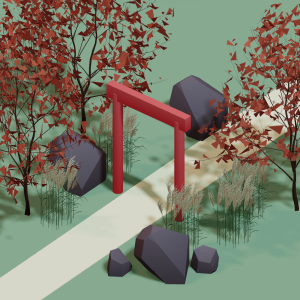 All training, tips and articles
All training, tips and articles
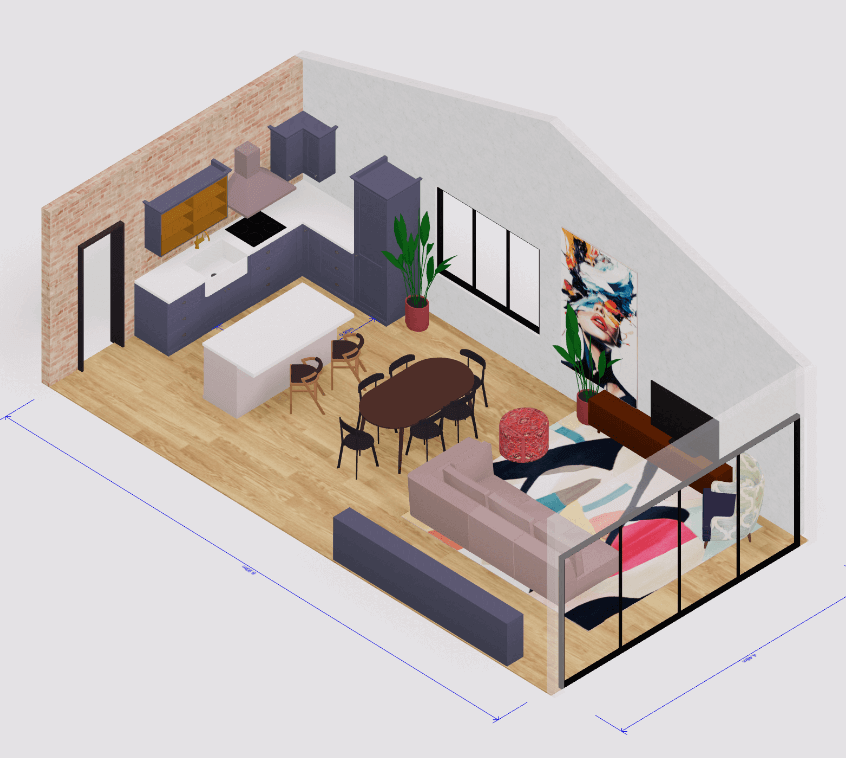 3D house design tool
3D house design tool
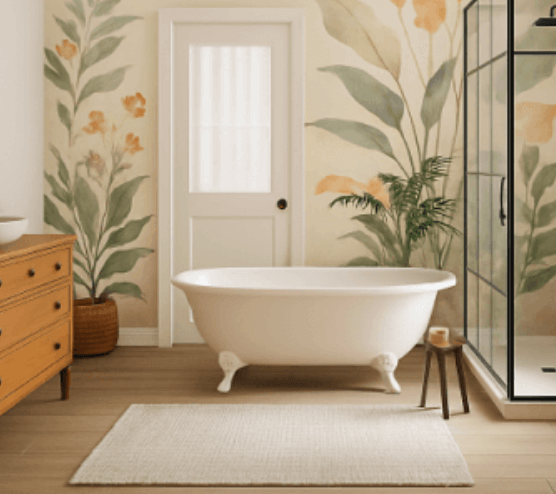
 Color palette generator
Color palette generator
 Floor plan creator
Floor plan creator
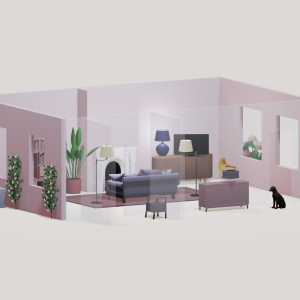 Interior design app
Interior design app
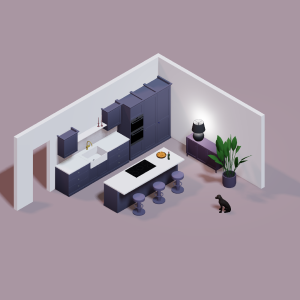 Kitchen design tool
Kitchen design tool
 House design software
House design software
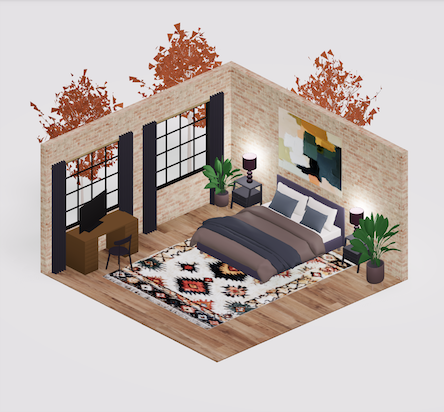 Room designer
Room designer
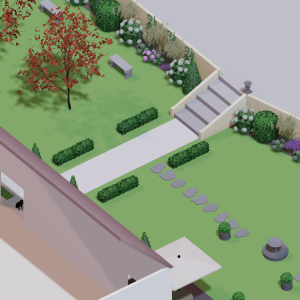 Landscape design software
Landscape design software
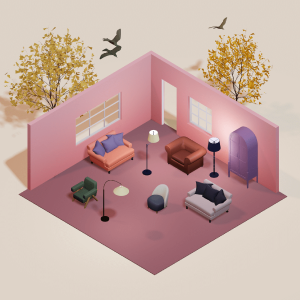 Bedroom design
Bedroom design
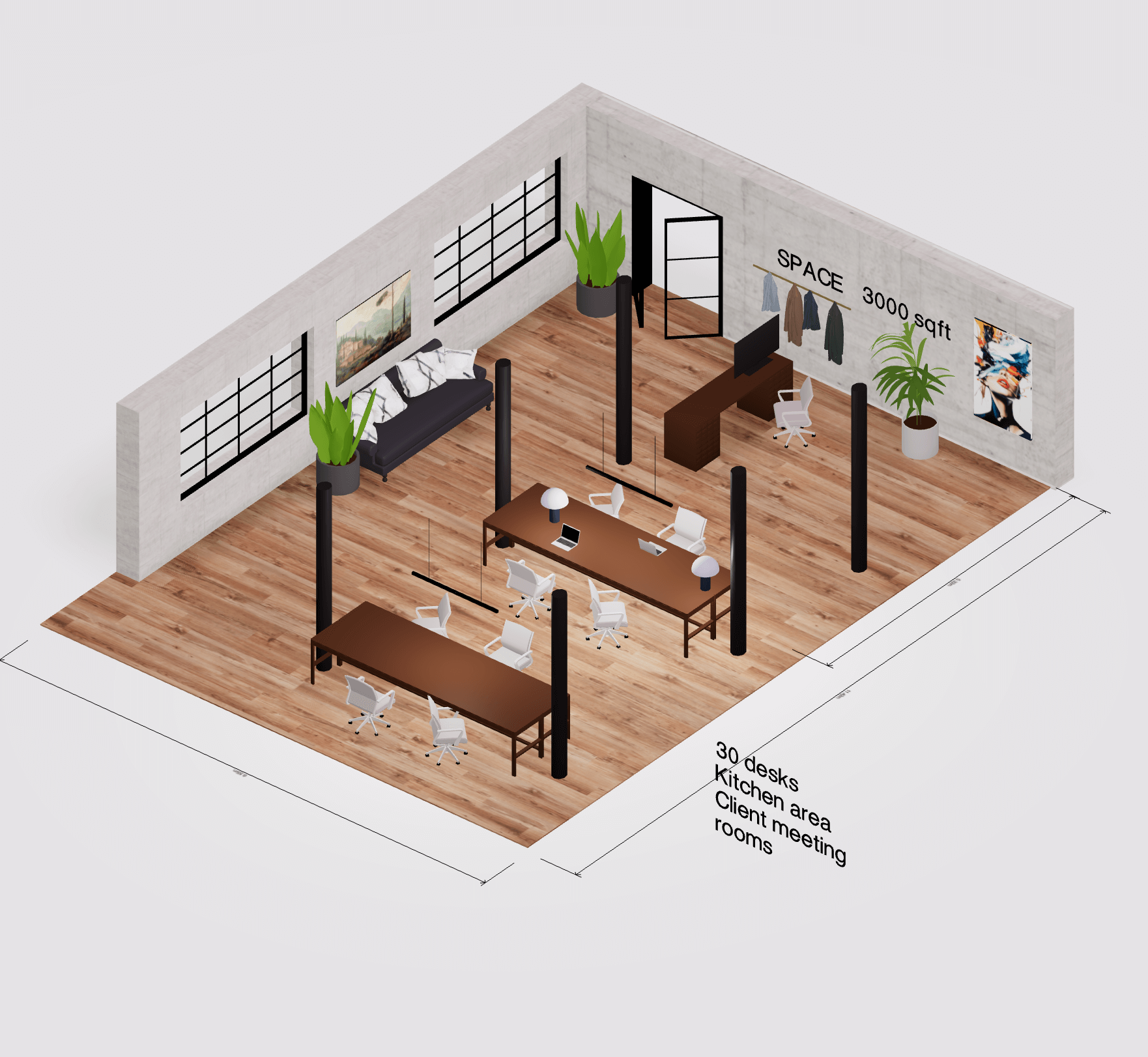 Office floor plan creator
Office floor plan creator
.png)



